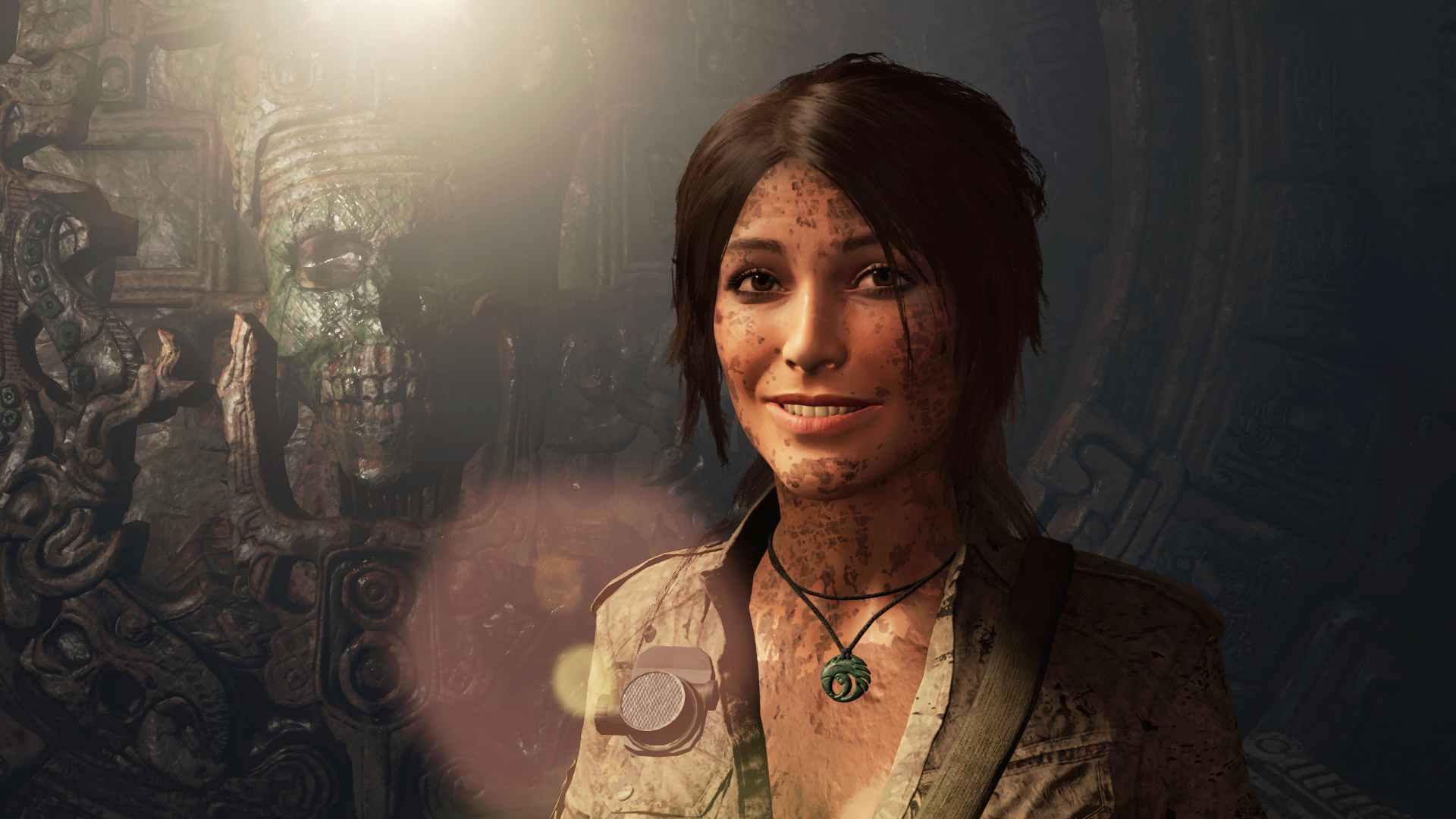Table of Contents Show
Lara Croft is one of the most iconic characters in the video game industry. As the main character in the long-running “Tomb Raider” series, Lara has seen her fair share of reboots, redesigns, and other changes over the years. Seeing as the series will be celebrating its 25th anniversary this year, it seems only appropriate to travel through the long history of Lara Croft. Over the years, Lara has changed both visually and in the way, her character’s personality is represented, going from an empty avatar for her player to a strong character in her own right.
The Origins Of Lara
At “Tomb Raider’s” conception, Lara’s character was originally intended to be a man. Inspired by the popular Indiana Jones series, lead designer Toby Gard envisioned his hero to be quite similar to the popular film hero. However, the team decided instead to feature a female main character. This was considered a risky move at the time, but creators believed using a female would help attract the adult men that made up their target demographic (( Nolfi, Joey. “‘Tomb Raider’: The Evolution of Lara Croft, from Polygonal Pinup to Action Icon.” EW.com. March 14, 2018. Accessed March 11, 2021. )).
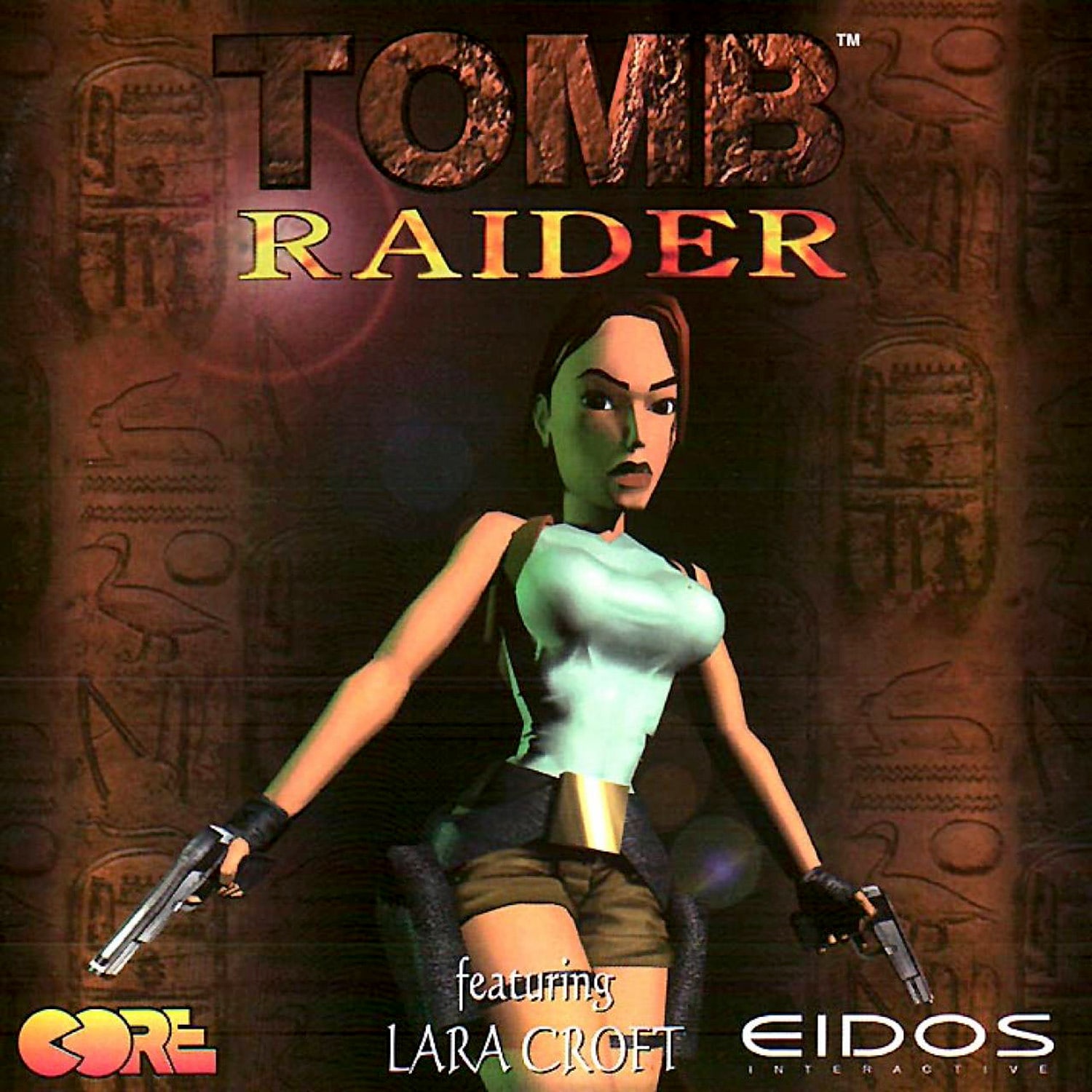
In an interview with The Face Magazine, Gard explains his intentions with the character. He stated, “Lara was designed to be a tough, self-reliant, intelligent woman. She confounds all the sexist clichés apart from the fact that she’s got an unbelievable figure. Strong, independent women are the perfect fantasy girls- the untouchable is always the most desirable.” (( Rehak, Bob. “Mapping the Bit Girl Lara Croft and New Media Fandom.” Information, Communication & Society 6, no. 4 (2003): 477-96. doi:10.1080/1369118032000163222. )). This shows that while the creators did intend to make a strong, independent female character, Lara’s primary intention was to be appealing to men rather than appealing to female gamers.
The Early Years
Tomb Raider (1996) was created by publisher Eidos and developers Core Design (( Webb, Kevin. “The New ‘Tomb Raider’ Game Is out Tuesday – Check out How Far Its Star, Lara Croft, Has Come since Her 1996 Debut.” Business Insider. September 11, 2018. Accessed March 11, 2021. https://www.businessinsider.com/lara-croft-tomb-raider-history-screenshots-2018-9. )). The game was puzzle-based and featured cinematic cut scenes that would help shape the new generation of games. Notably, players had to think their way into the tombs, climb over objects, or avoid traps rather than just shooting their way in. Lara was intended to be a clever character, not a brawler.
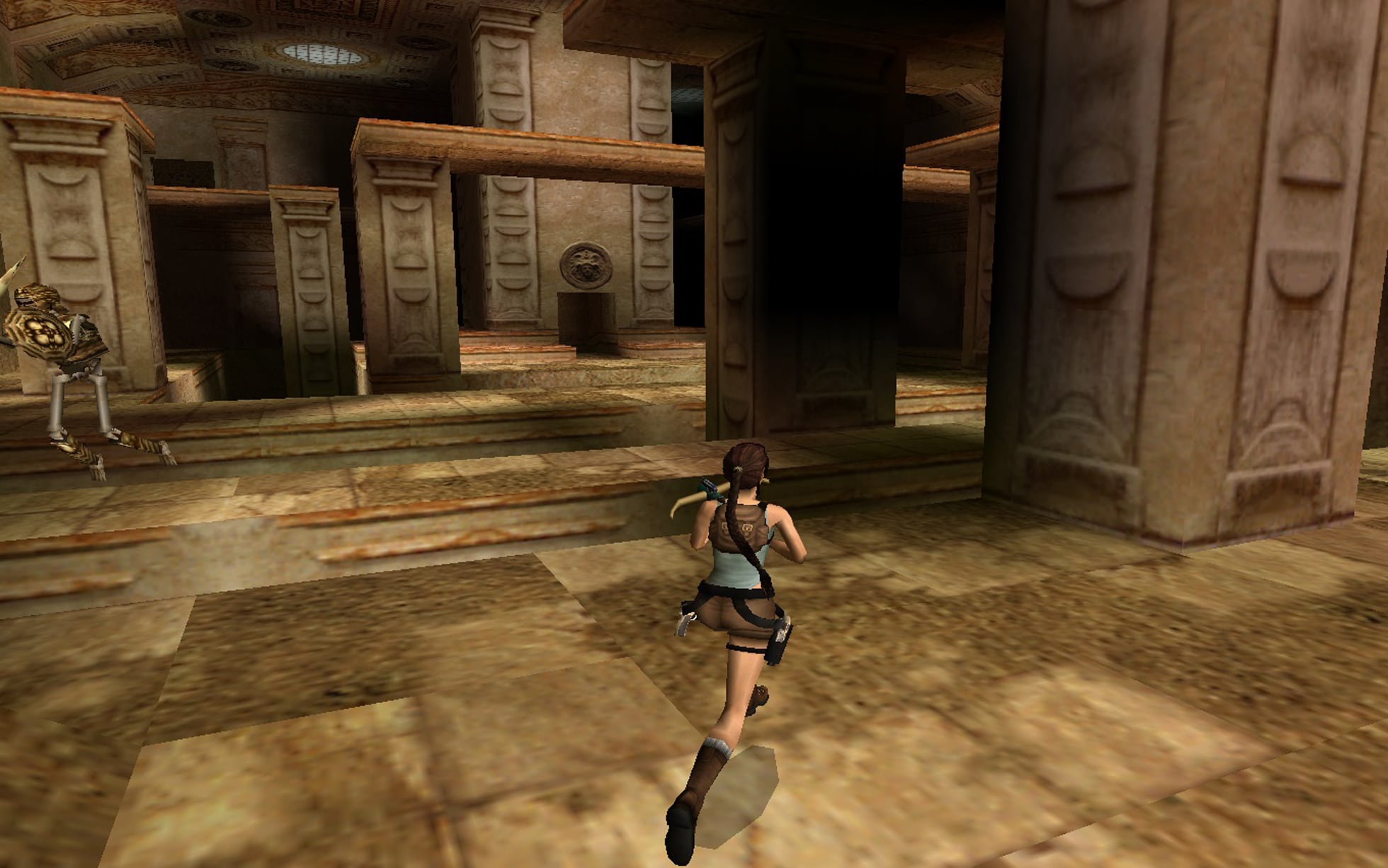
Lara’s appearance was incredibly unrealistic, and not just from a graphics perspective. Her character model had incredibly large breasts, a waist smaller than her head, and tiny legs. Rather than something more suitable for adventuring, Lara wore tiny khaki shorts and a blue tank top. While her appearance was clearly not made with female audiences in mind, Lara did succeed in something significant for females in video games: she broke into a heavily male-dominated space in a traditionally male role. Rather than being the damsel or a victim, Lara was the main character, and she was firm, smart, and capable. Her success was critical in paving the way for more female characters to start emerging in games, even if she did do it in booty shorts (( Mikula, Maja. “Gender and Videogames: The Political Valency of Lara Croft.” Continuum 17, no. 1 (2003): 80. doi:10.1080/1030431022000049038. )).
Driven by the massive success of the first game, a new “Tomb Raider” was released each year following the first until 2000. “Tomb Raider II”, “Tomb Raider III: Adventures of Lara Croft”, “Tomb Raider: The Last Revelation”, and “Tomb Raider Chronicles” were relatively similar. They improved on graphics quality but otherwise kept Lara’s personality similarly empty and her appearance largely the same. Rehak suggests that Lara was a perfect combination of emptiness and concrete facts and personality. The emptiness of the character provided a vessel for the player to occupy while the information that was given about Lara was captivating enough to capture the public mind and encourage fans to fill in the rest of the character themselves (( Rehak, Bob. “Mapping the Bit Girl Lara Croft and New Media Fandom.” Information, Communication & Society 6, no. 4 (2003): 477-96. doi:10.1080/1369118032000163222. )).
Marketing Battles And Growing Popularity
Throughout the franchises’ early years, the marketing and creative teams were at odds about the way that Lara would be presented. Gavin Rummery, one of the ’90s “Tomb Raider” games developers, claimed that Gard was particularly bothered by the marketing team’s direction. Gard wanted to market the game “classic, like a movie [with a poster]… But marketing guys totally brushed him off.” (( Nolfi, Joey. “‘Tomb Raider’: The Evolution of Lara Croft, from Polygonal Pinup to Action Icon.” EW.com. March 14, 2018. Accessed March 11, 2021. https://ew.com/movies/tomb-raider-evolution-lara-croft/. )) They were far more focused on sexualizing Lara.

Lara often appeared partially nude in advertisements and magazines. Gard left to create his own company after the initial game release. He wanted to “have greater control over the new characters, and game [he] wanted to design” than he had with Lara (( Mikula, Maja. “Gender and Videogames: The Political Valency of Lara Croft.” Continuum 17, no. 1 (2003): 82. doi:10.1080/1030431022000049038. )). In response to questions and comments about Lara’s body, including the rumor that there was a ‘nude cheat’ in the game, the remaining creators added an end scene to the second game. The scene featured Lara headed to the shower, but before she takes off her robe, she turns to the camera, says, “Don’t you think you’ve seen enough?” then shoots the camera. (( Nolfi, Joey. “‘Tomb Raider’: The Evolution of Lara Croft, from Polygonal Pinup to Action Icon.” EW.com. March 14, 2018. Accessed March 11, 2021. https://ew.com/movies/tomb-raider-evolution-lara-croft/. )).
By the end of the ‘90s, the character of Lara Croft had started to become even more popular and well-known than “Tomb Raider” itself. It was likely the marketing that prompted an interesting phenomenon in which gamers became bigger fans of Lara Croft than they were of “Tomb Raider.” Lara “invites a cult of celebrity akin to that surrounding movie stars like Harrison Ford” because she is both a strong enough character to be consistent and memorable, yet empty enough in personality so that everyone can find her relatable or attractive. (( Rehak, Bob. “Mapping the Bit Girl Lara Croft and New Media Fandom.” Information, Communication & Society 6, no. 4 (2003): 483. doi:10.1080/1369118032000163222. )).
The Official Croft Models
One notable marketing scheme involved a series of models hired over the years to appear as Lara. These women were all costumed and styled to appear as Lara Croft in events and ads. These models reinforced the ‘pin-up girl’ image that the marketing team wanted. One notable Croft Model, Rhona Mitra, was hired in the late ’90s and participated in photoshoots and interviews, and even performed as a lip-syncing double in concerts for a CD tie-in (( Rehak, Bob. “Mapping the Bit Girl Lara Croft and New Media Fandom.” Information, Communication & Society 6, no. 4 (2003): 485. doi:10.1080/1369118032000163222. )).

Notably, Mitra was fired after claiming in an interview that she had grown so close to the character that she was Lara Croft (( Rehak, Bob. “Mapping the Bit Girl Lara Croft and New Media Fandom.” Information, Communication & Society 6, no. 4 (2003): 486. doi:10.1080/1369118032000163222. )). After that incident, all Croft Models only referred to Lara in the third person despite themselves being dressed and posed to represent the character. The choice to fire Mitra and establish this third-person rule reinforces the idea that Lara was meant to be a vessel for multiple people, someone everyone could see in themselves, rather than a single person (( Rehak, Bob. “Mapping the Bit Girl Lara Croft and New Media Fandom.” Information, Communication & Society 6, no. 4 (2003): 486. doi:10.1080/1369118032000163222. )).
Falling In Popularity
Released in 2000, “Tomb Raider Chronicles” critically underperformed and sold less than two million units worldwide (( Nolfi, Joey. “‘Tomb Raider:’ The Evolution of Lara Croft, from Polygonal Pinup to Action Icon.” EW.com. March 14, 2018. Accessed March 11, 2021. )). This made it the worst-performing game released into the franchise thus far. Perhaps in an attempt to refresh the series after the disappointment of the previous game, “Tomb Raider: Angel of Darkness” (2003) changed things. Rather than exploring remote locations, Lara appears in a city and received a redesign.
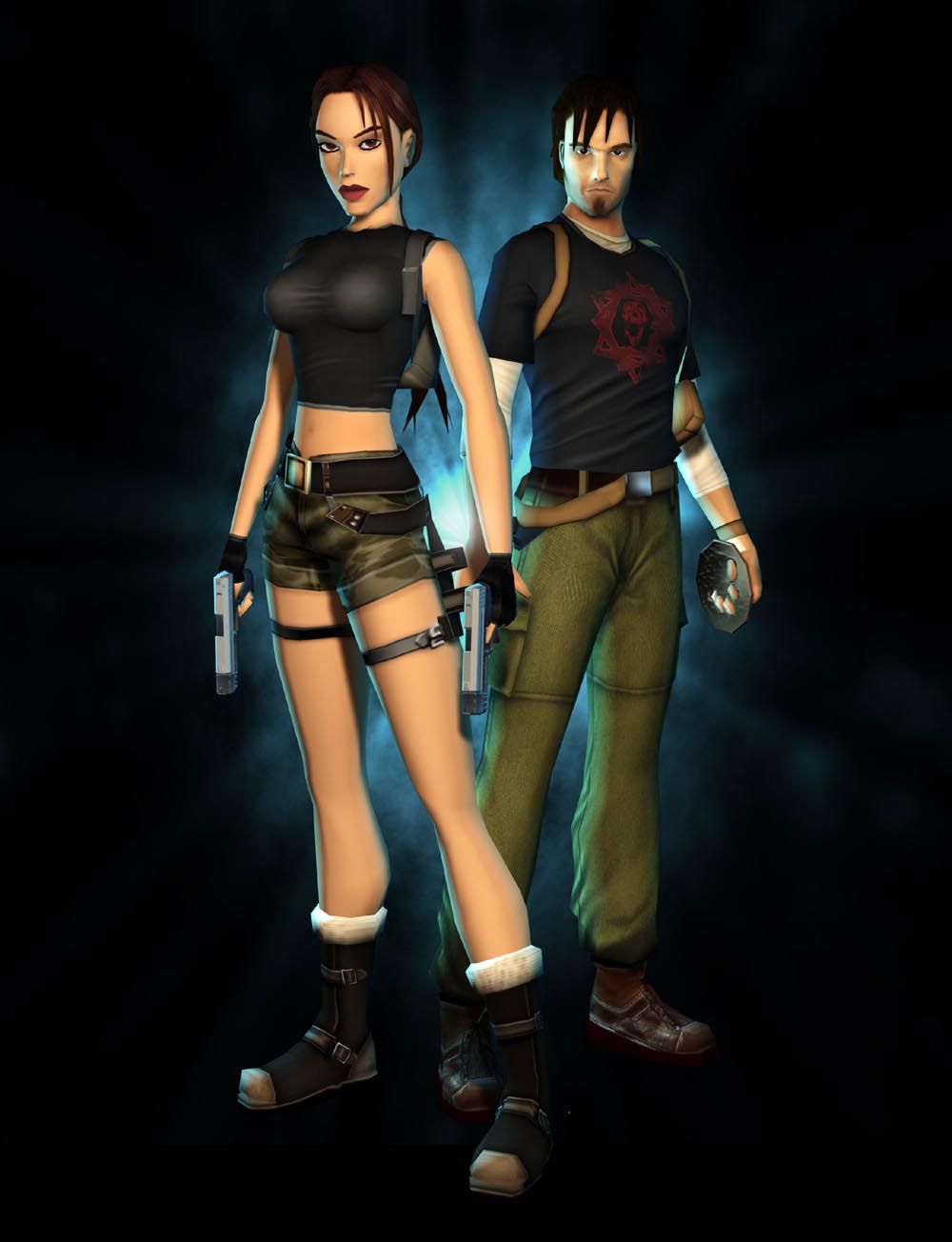
This Lara still had incredibly exaggerated proportions but a new sense of style. She wore darker colors and had a variety of different outfits, as well as a pair of trendy shades. Additionally, a new male character was introduced to accompany Lara. Unfortunately for the studio, fans didn’t appreciate these new changes. Things like cutscenes, puzzles, and, to a lesser extent, female characters had become too common in the industry to make “Tomb Raider” stand out the way it had in earlier years. The game didn’t shine on the new PS2 console (( Webb, Kevin. “The New ‘Tomb Raider’ Game Is out Tuesday – Check out How Far Its Star, Lara Croft, Has Come since Her 1996 Debut.” Business Insider. September 11, 2018. Accessed March 11, 2021. )), and fans seemed to call out for a return to the traditional Lara Croft-style solo adventure.
Angelina Jolie Takes Up The Role
Settled in between these two disappointing games was the launch of the first Lara Croft: Tomb Raider movie. This film starred Angeline Jolie and was a rousing success. At the time, it was the highest-ever grossing female-fronted action movie (( Nolfi, Joey. “‘Tomb Raider:’ The Evolution of Lara Croft, from Polygonal Pinup to Action Icon.” EW.com. March 14, 2018. Accessed March 11, 2021. )). The second film, Lara Croft: Tomb Raider – The Cradle of Life, came out only one month after the release of “Tomb Raider: Angel of Darkness” and followed in the game’s footsteps by being largely unsuccessful in gaining positive reviews. While the film was financially successful, it received lackluster reviews, and Jolie chose not to reprise her role as Lara for the third time (( Webb, Kevin. “The New ‘Tomb Raider’ Game Is out Tuesday – Check out How Far Its Star, Lara Croft, Has Come since Her 1996 Debut.” Business Insider. September 11, 2018. Accessed March 11, 2021. )).
Crystal Dynamics Steps In
Perhaps because of the rut that the “Tomb Raider” series had fallen into, Eidos decided to hand Lara off to a new developer, Crystal Dynamics. Crystal Dynamics worked to refresh Lara’s character design for a contemporary audience, while still preserving the roots of the game that fans loved. Crystal Dynamic’s Lara was more realistically proportioned than any previous versions of the character. The marketing surrounding the game also leaned away from the highly sexualized version of the character discussed earlier (( Webb, Kevin. “The New ‘Tomb Raider’ Game Is out Tuesday – Check out How Far Its Star, Lara Croft, Has Come since Her 1996 Debut.” Business Insider. September 11, 2018. Accessed March 11, 2021. )).
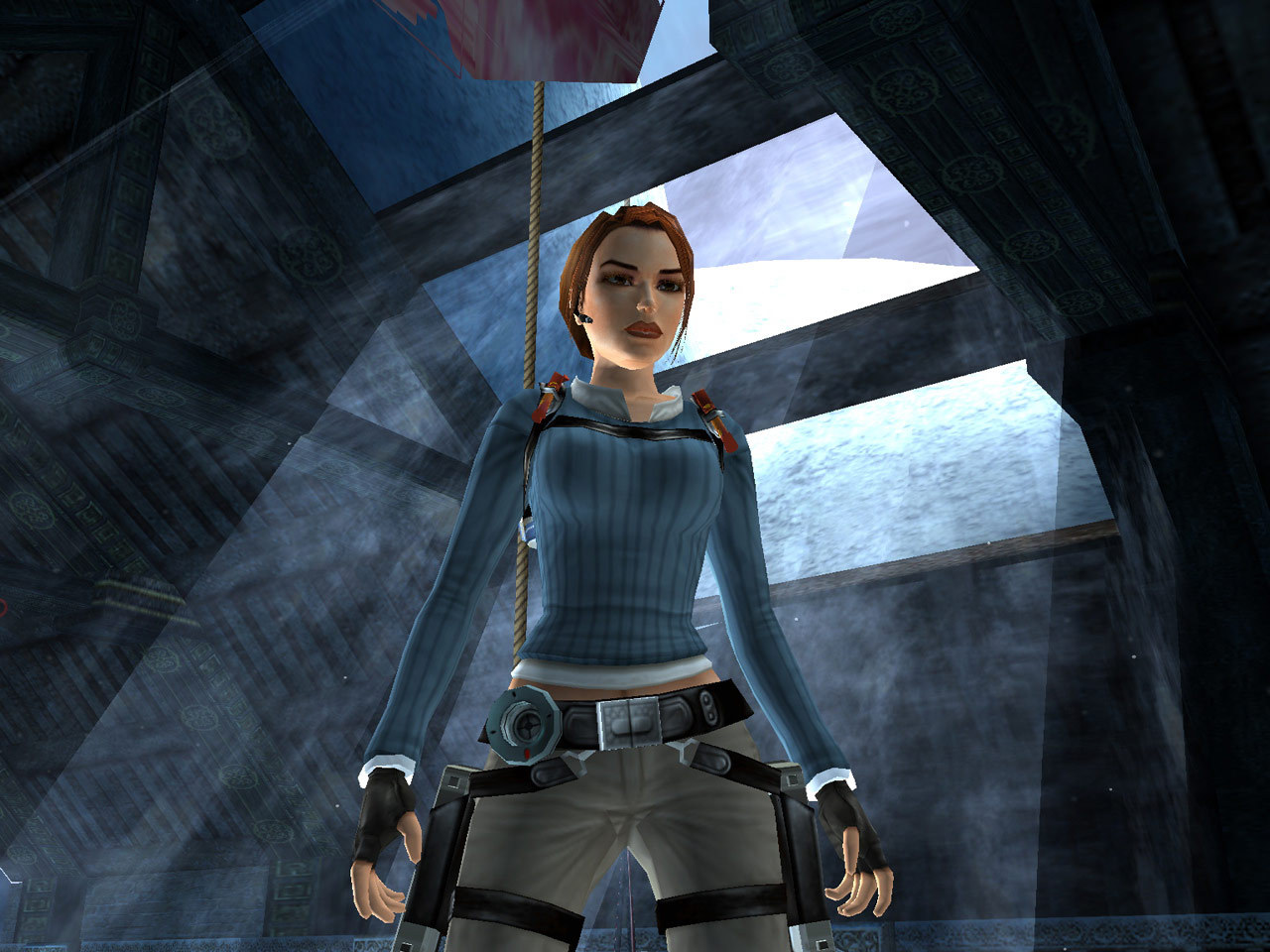
Gameplay highlighted Lara’s personality traits, using cut scenes and interactions with other characters. More than ever before, it seemed Lara was as much a character in her own right as she was an avatar for the player. Between 2006 and 2008, Crystal Dynamics released three games in the franchise, including a rerelease of the original “Tomb Raider” to celebrate its twentieth anniversary (( Nolfi, Joey. “‘Tomb Raider:’ The Evolution of Lara Croft, from Polygonal Pinup to Action Icon.” EW.com. March 14, 2018. Accessed March 11, 2021. )). In these games, Lara returned to her roots and traveled back to deserts, jungles, and other similarly remote locations. Her animations, backstory, and personality were recreated and the result was a renewal in Lara’s popularity.
Lara Rebooted
In 2009, Eidos was acquired by Square Enix, who announced they were going to be creating a new Tomb Raider game. This trilogy of games reimagined Lara’s origins, showing her very first adventure. Rather than a playgirl millionaire seasoned in adventuring and crafted to attract male players, this Lara is a relatable young woman fighting to survive a shipwreck. Rhianna Pratchett, the writer for the 2013 reboot series, stated that she wanted “to bring her [Lara] down to earth a little bit more, and think about her as an average London student just out of university who paid her way through and worked bar jobs — someone more in line with young women in London today.” (( Webb, Kevin. “The New ‘Tomb Raider’ Game Is out Tuesday – Check out How Far Its Star, Lara Croft, Has Come since Her 1996 Debut.” Business Insider. September 11, 2018. Accessed March 11, 2021. )). As a result, this new Lara feels and looks like a real person.
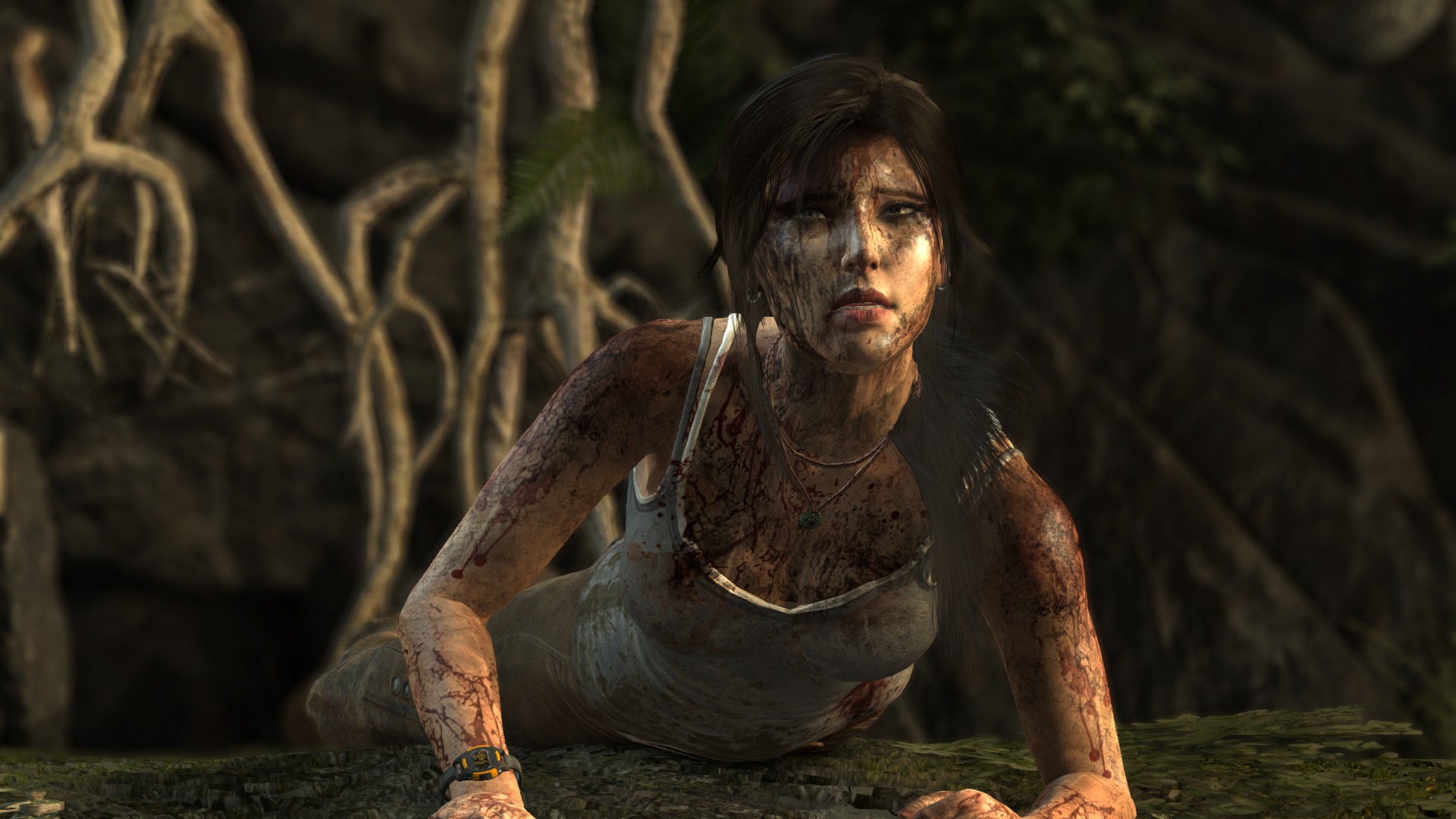
Sporting a truly proportional body and pants rather than booty shorts, Lara looks more human than ever. Throughout the game, she even gains wounds and gets covered in dirt the longer you play rather than staying runway ready the whole time. Square Enix has released three games within their reboot so far: “Tomb Raider” (2013), “Rise of the Tomb Raider” (2015), and “Shadow of the Tomb Raider” (2018) (( Nolfi, Joey. “‘Tomb Raider:’ The Evolution of Lara Croft, from Polygonal Pinup to Action Icon.” EW.com. March 14, 2018. Accessed March 11, 2021. )). All three games have had a very positive response, and they even inspired another movie adaptation starring Alicia Vikander that released in 2018.
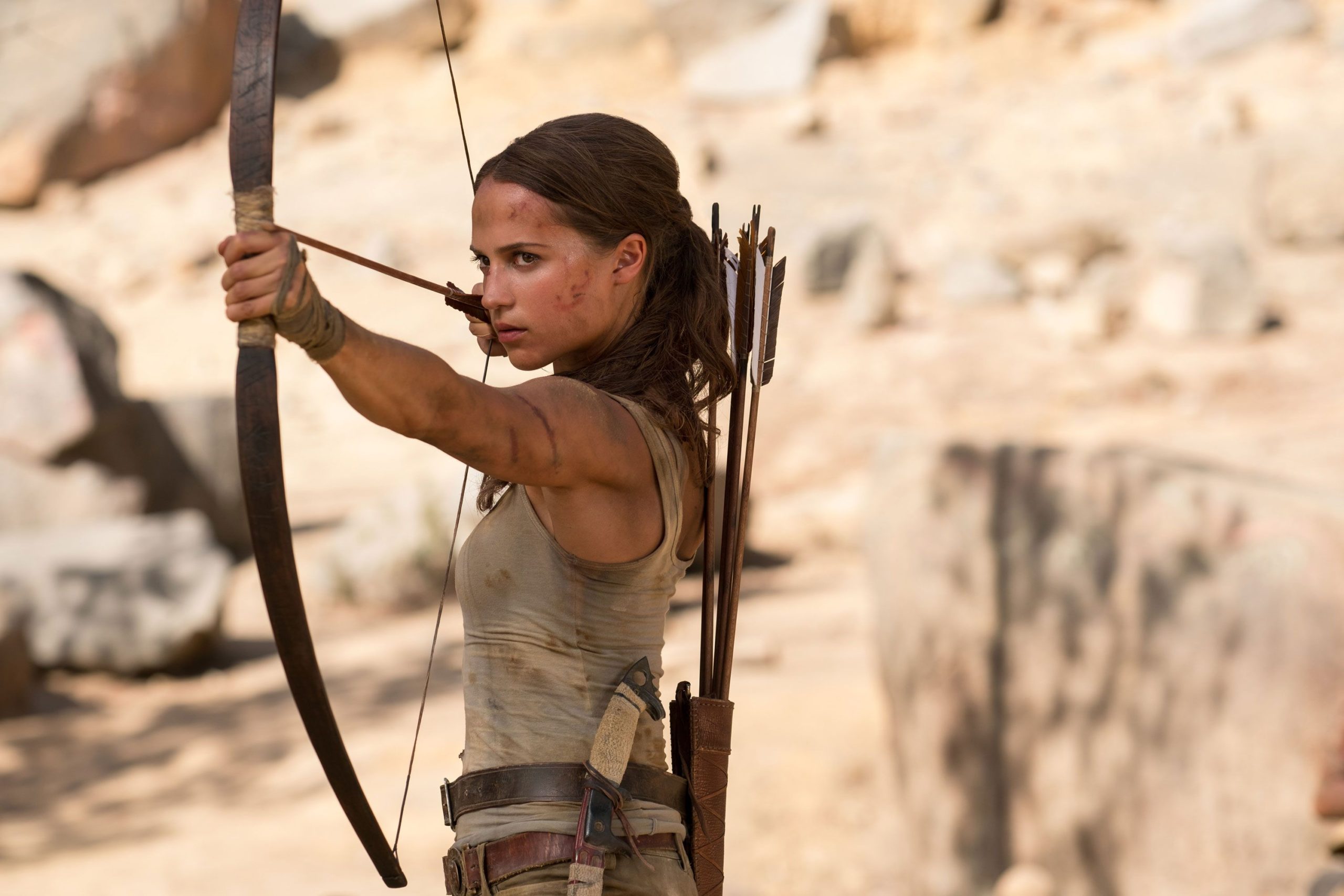
This final reimagining of Lara Croft was made to be relatable and appeal to not just male but female gamers as well. This new Lara’s incredible success, Pratchett suspects, might be part of the substantial rise in female videogame heroines since 2013 (( Nolfi, Joey. “‘Tomb Raider’: The Evolution of Lara Croft, from Polygonal Pinup to Action Icon.” EW.com. March 14, 2018. Accessed March 11, 2021. )).
Always Changing, Yet Always The Same
At her core, Lara has always been a bold adventurer capable of incredible feats. For nearly twenty-five years, Lara Croft has flipped, fought, and thought her way across our screens. Though in the beginning, her appearance and hyper-sexualization left a lot to be desired by female viewers, she’s slowly but surely grown into a heroine worthy of the franchise’s incredible success.
